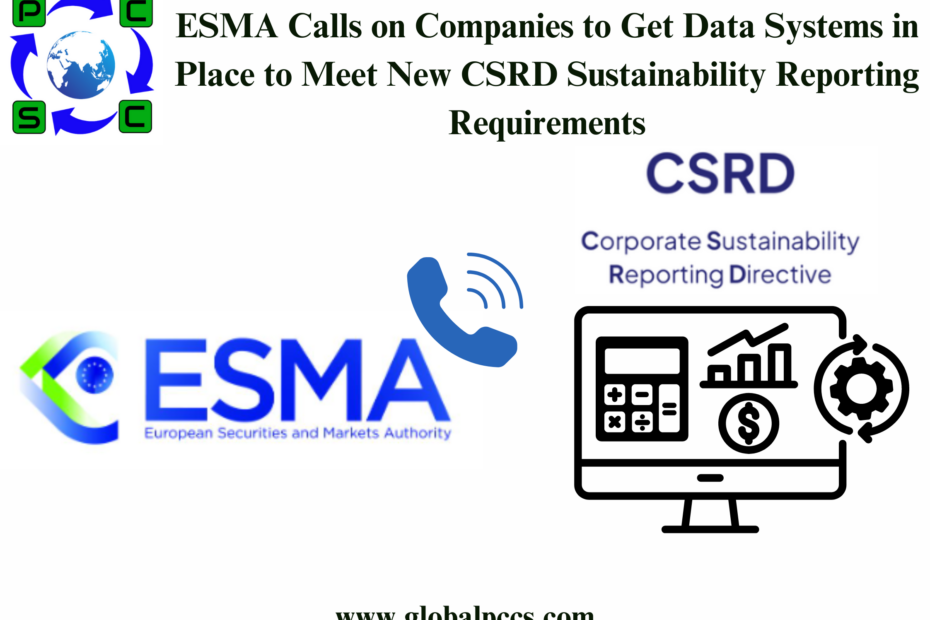 A public statement on the first application of the European Sustainability Reporting Standards (ESRS) was released by the European Securities and Markets Authority (ESMA), the EU’s market regulator. The statement aims to assist businesses in getting ready for the new sustainability reporting and supervisory requirements under the EU’s Corporate Sustainability Reporting Directive (CSRD), with the first reports due out early in 2019.
A public statement on the first application of the European Sustainability Reporting Standards (ESRS) was released by the European Securities and Markets Authority (ESMA), the EU’s market regulator. The statement aims to assist businesses in getting ready for the new sustainability reporting and supervisory requirements under the EU’s Corporate Sustainability Reporting Directive (CSRD), with the first reports due out early in 2019.
The Community Sustainability Reporting Directive (CSRD) is a significant update to the previous EU sustainability reporting framework, the Non-Financial Reporting Directive (NFRD). It introduces more detailed reporting requirements on company impacts on the environment, human rights and social standards, and sustainability-related risk. It also significantly increases the number of companies required to provide sustainability disclosures, from approximately 12,000 to over 50,000. The CSRD went into force for major public-interest firms with more than 500 employees at the beginning of 2024. The first reports were due in 2025, and then enterprises with more than 250 employees or €40 million in revenue the following year, and listed SMEs the year after that.
The CSRD also presents a “double materiality” approach to sustainability reporting, which comprises reporting on an enterprise’s exposure to risks and the effects of sustainability concerns on it, in addition to the enterprise’s effects on society and the environment.
For businesses getting ready to release their first CSRD reports, the new publication outlines important topics such as setting up governance structures and internal controls, creating and carrying out materiality assessments, being open about the transitional reliefs offered by the regulation during the first years of implementation, creating a sustainability statement that is ready for digitization, and establishing connections between financial and sustainability data.
One of the report’s primary recommendations is that issuers “carefully set up their systems of data collection and analysis, as well as internal controls” in order to fulfil the extensive reporting requirements of the ESRS and carry out double materiality assessments. The regulatory body emphasised that businesses having past experience with sustainability reporting under previous regulatory frameworks should evaluate whether their current systems still meet the requirements of the CSRD.
For businesses unable to gather information from their upstream and downstream value chains, the CSRD law provides transitional respite for the first three years of reporting. In order to facilitate continuous improvement as they start reporting, ESMA encourages businesses to conduct gap assessments regarding value chain information in the report. It also reminds issuers that “the ESRS do not envisage cases in which the lack of data justifies the omission of disclosure of material information.”
Companies should review their materiality process in order to comply with the CSRD’s double materiality reporting requirements. They should also fully disclose all information related to the materiality process, according to the report’s additional recommendations. Additionally, ESMA stated that companies must guarantee the connectivity of financial and sustainability information and that sustainability reports be clearly structured and digitization-ready. This includes the ability to report connections within the sustainability statement as part of the disclosures on current and anticipated financial effects.
ESMA released its Final study on the rules on the Enforcement of Sustainability Information (GLESI) in addition to the ESRS study. This report established rules for supervisory bodies for the enforcement of sustainability information regulations.








 Authorised IMDS & CDX Training & Consulting partner for
Authorised IMDS & CDX Training & Consulting partner for





